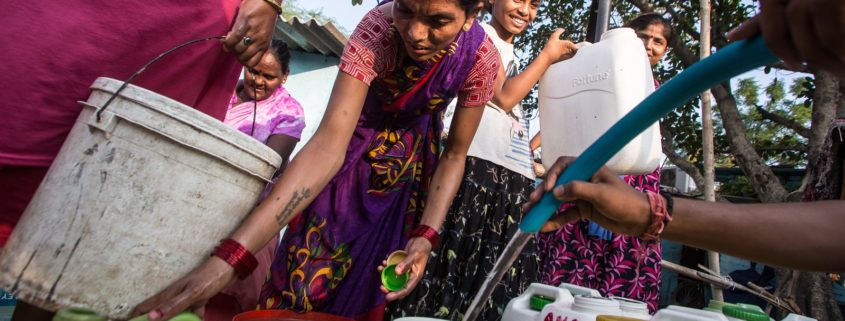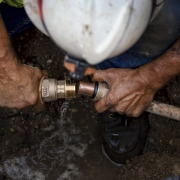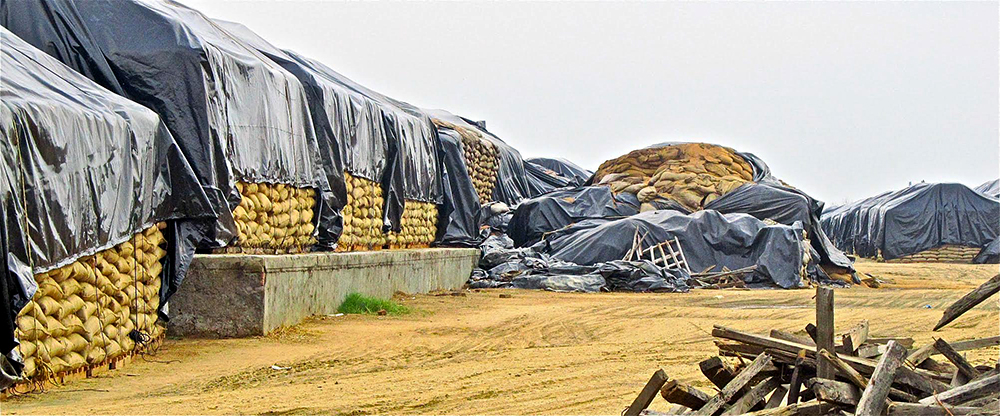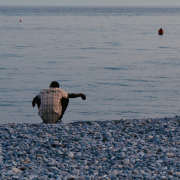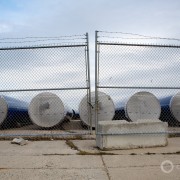SDG Report: Billions Lack Safe Drinking Water and Sanitation at Home
Report is first to track higher standards set by the UN’s sustainable development goals.
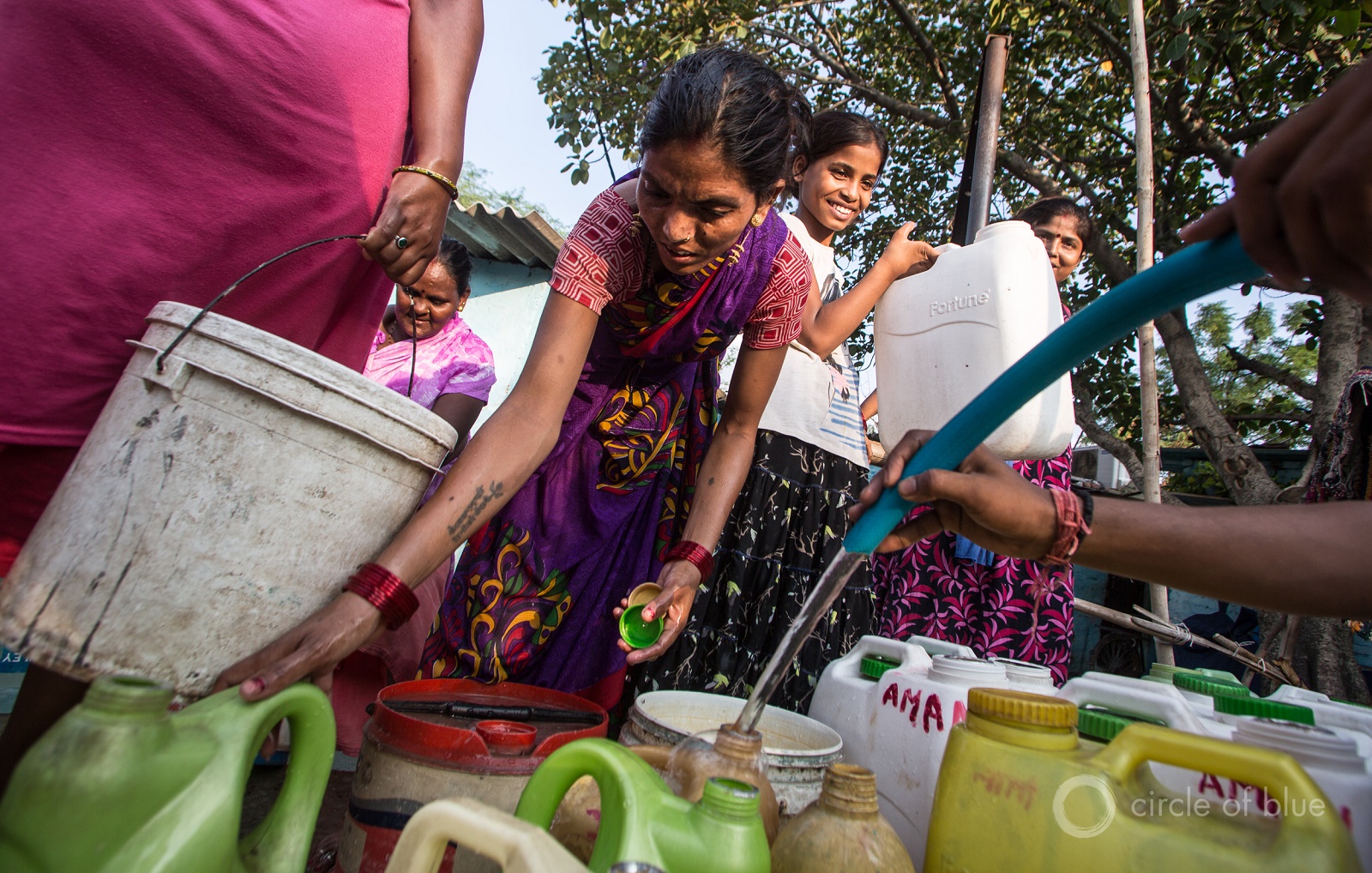
Women in Delhi wait for water at a tap that runs for two hours each day — one hour in the morning and one in the evening. Photo © J. Carl Ganter / Circle of Blue
By Brett Walton, Circle of Blue
Some 2.1 billion people lack water at home that is free of bacterial contamination and is available when needed, according to a World Health Organization/UNICEF report that sets a baseline against which the world will measure progress toward the sustainable development goals for drinking water, sanitation, and hygiene.
Sanitation is even farther from universal coverage, with some 4.4 billion people not meeting the new standard for high-quality service.
The report is influential, guiding the flow of aid dollars, national policies, and the design of drinking water and sanitation systems.
“Only by understanding existing arrangements can we plan and target our efforts appropriately,” Tom Slaymaker, a statistics and monitoring specialist at UNICEF, told Circle of Blue.
The sustainable development goals, or SDGs, aim to eliminate extreme poverty by 2030. Approved by the member states of the United Nations in September 2015, the SDGs set ambitious goals for drinking water, sanitation, and hygiene that far exceed the standards of the world’s previous poverty-reducing measure, the millennium development goals, or MDGs. The previous goals looked only at the infrastructure to deliver water, deeming the hardware “improved” if it adequately protected against contamination. Piped water is improved. Tanker trucks are not.
But an improved source did not mean that the water it delivered is clean or accessible. That is where the SDGs come in, adding a higher standard of service, called “safely managed.” The WHO/UNICEF report is the first assessment of safely managed service.
For drinking water this means that water is acquired from an improved source located within the household property, available when needed, and free from fecal bacteria as well as arsenic and fluoride, the two chemical contaminants identified as priorities. Some 2.1 billion people, less than 30 percent of the world population, do not have safely managed water, according to the WHO/UNICEF figures.
For sanitation, safely managed means the use of an improved facility in which the toilet waste is disposed of, either on-site or treated at an outside unit, and a handwashing station with soap available. Some 4.4 billion do not have safely managed sanitation.
One example of the data potentially directing policy, Slaymaker noted, is for toilet facilities. In the past, he said, policymakers may have assumed that, like rich countries, piped sewers would be the end point for developing countries. But looking at the data, “that is unlikely to be the case,” he said. Fewer than one in ten rural areas globally have a sewer connection. Only 4 percent of the people in least developed countries have a sewer, but 43 percent have an on-site facility such as a latrine or septic system.
A Range of Service Levels
Safely managed, an aspirational goal, is the highest rung on a ladder of service levels. One step below is “basic” service, which means that collecting drinking water from an improved source requires less than 30 minutes roundtrip, including wait time. Universal access to basic service is an SDG goal. According to the report, roughly 6.5 billion people, 89 percent of the population, have basic drinking water service, and roughly 5 billion people, or 68 percent, have basic sanitation.
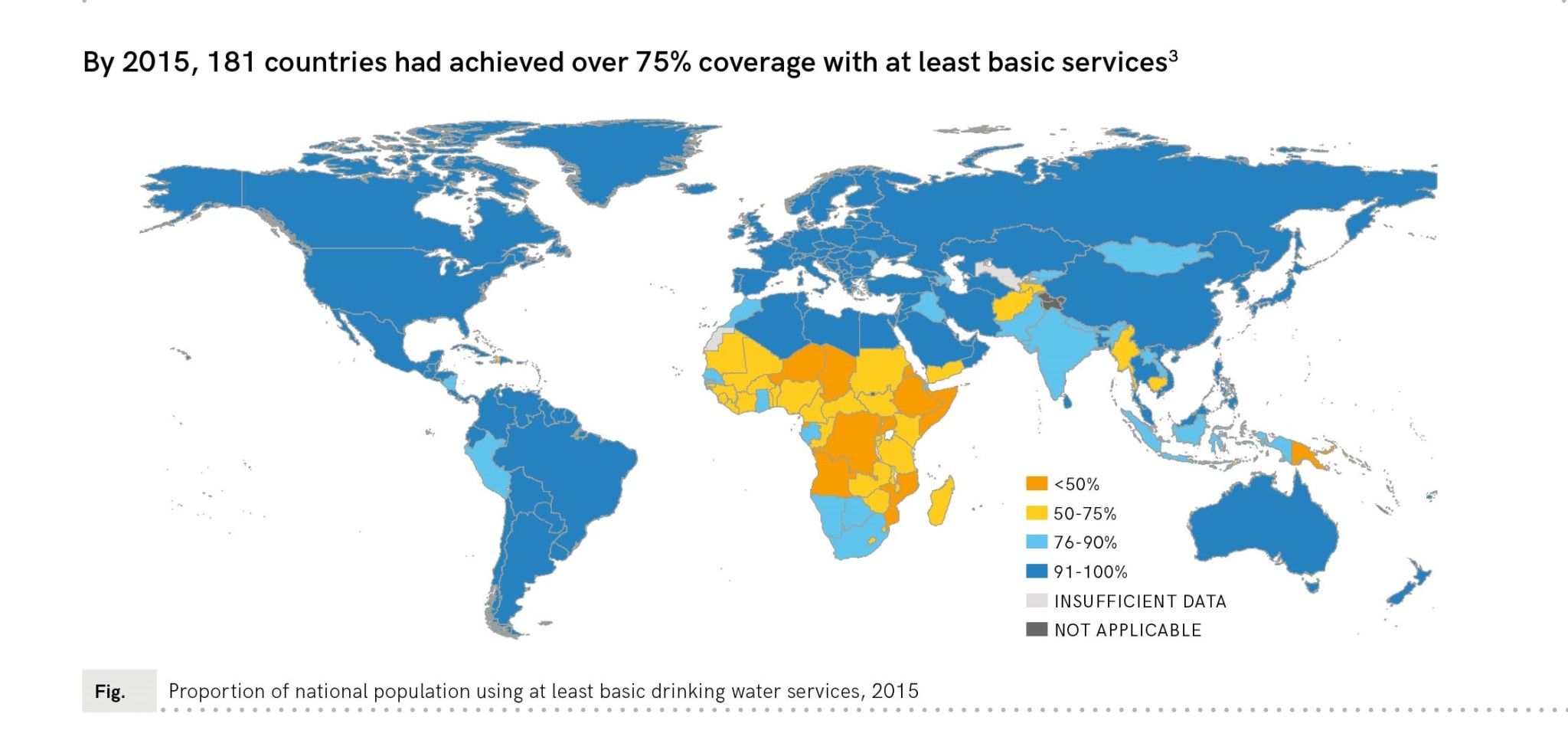
For both drinking water and sanitation, urban areas have better service than rural areas.
The higher standard represented by the SDGs means that fewer people meet the target than under the MDGs. At the end of the MDG monitoring period in 2015, some 663 million people used unimproved drinking water sources and 2.4 billion used unimproved sanitation.
The WHO/UNICEF report includes statistics that were not part of previous monitoring reports — data on handwashing and on inequality.
For handwashing there was not enough data to produce a global estimate. Countries with data available are largely in Africa and Asia. In sub-Saharan Africa, less than half the population of most countries has soap and water at home for handwashing.
The data on inequality looks at disparities in service between the rich and poor and between regions within a country. The UN member states pledged in the SDG preamble that “no one will be left behind.”
The report found severe inequalities within countries. In Panama, for example, the best-performing regions had 95 percent of people with basic sanitation. But in the worst-performing region just 1 percent had such service.
The SDG assessment report will be published every two years, Slaymaker said. Reports in the interim years will go into depth on a particular topic.
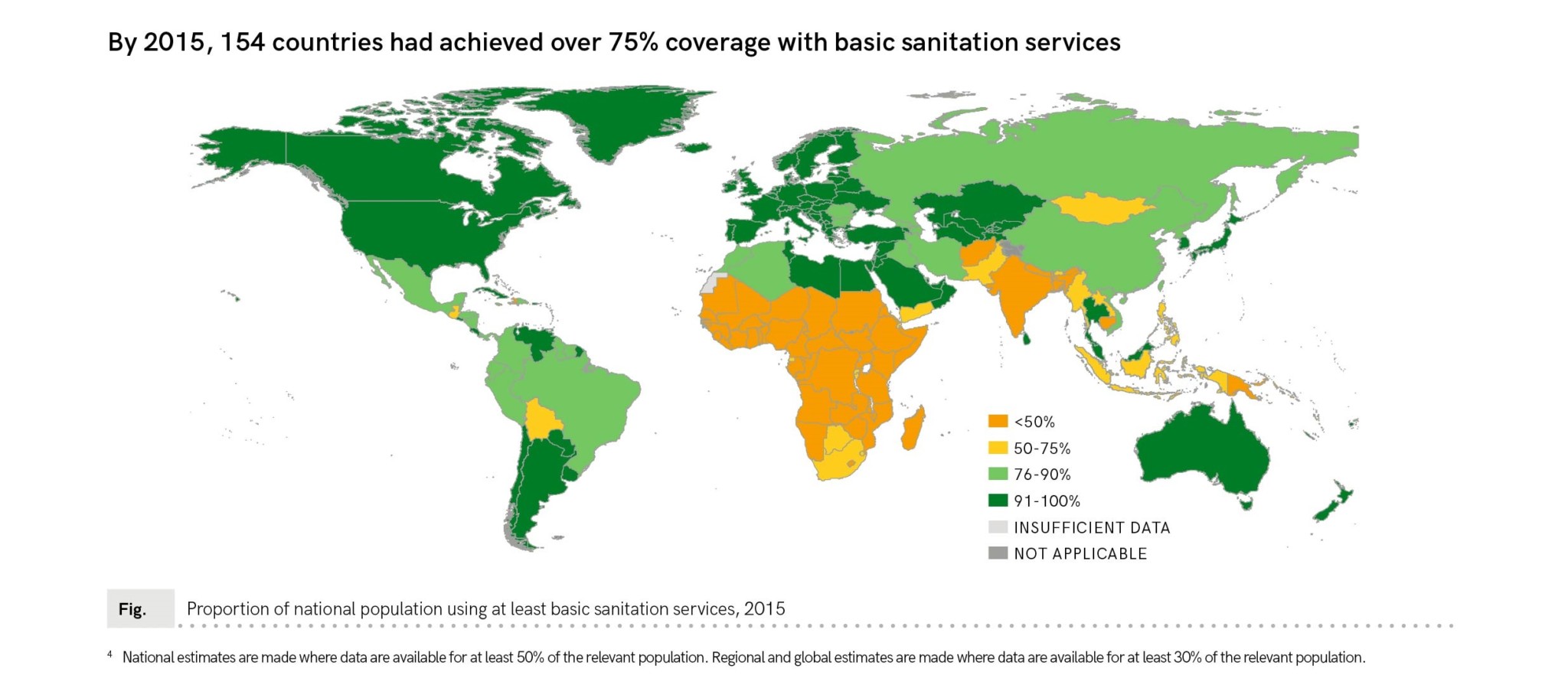
Brett writes about agriculture, energy, infrastructure, and the politics and economics of water in the United States. He also writes the Federal Water Tap, Circle of Blue’s weekly digest of U.S. government water news. He is the winner of two Society of Environmental Journalists reporting awards, one of the top honors in American environmental journalism: first place for explanatory reporting for a series on septic system pollution in the United States(2016) and third place for beat reporting in a small market (2014). He received the Sierra Club’s Distinguished Service Award in 2018. Brett lives in Seattle, where he hikes the mountains and bakes pies. Contact Brett Walton

